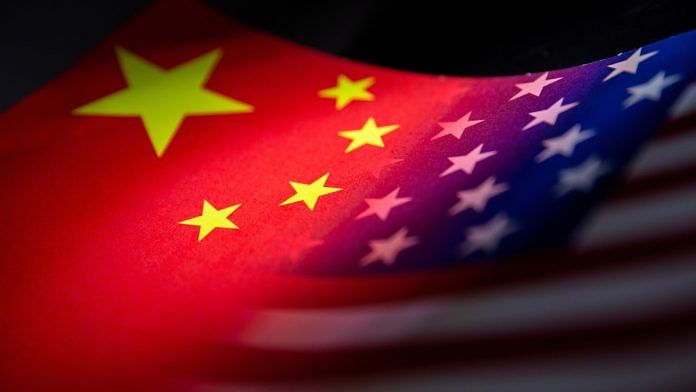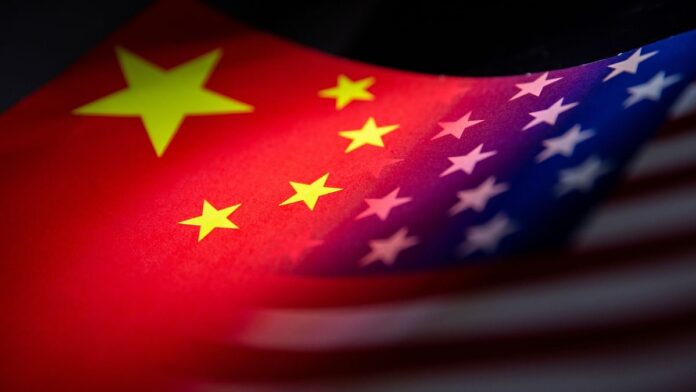


For months, the gangling, soft-spoken Meredith Gardner, a scholar of French, German, Lithuanian, Spanish and Sanskrit, had been staring into the abyss, willing the great blocks of five-digit numbers—26473 25660 34442 64969 458454—to give up their meaning. Then, at the end of 1946, he began to understand the heavily encrypted Soviet intelligence telegrams held a terrifying secret. Klaus Fuchs, the brilliant theoretical physicist who first calculated the yield of an atomic explosion, was also a spy who had provided the Soviets with the secrets of making a nuclear weapon.
Last week, as top American executives met at the White House to discuss the penetration of the country’s telecommunications networks by the Chinese, they were served with a warning of the strategic damage espionage can inflict.
Even today, the scale of Soviet intelligence operations revealed by Venona, the top-secret decryption programme led by Gardner, almost defies imagination. Aeronautical scientist William Perl handed over jet aircraft design experiments that allowed the MiG15 to outclass American combat aircraft Korea; British diplomat Donald McLean provided strategic assessments; Daniel Zarat gave information on new conventional explosives.
Large numbers of the hundreds of agents identified in the Venona documents escaped—among them, scientists Alfred Sarant and Joel Barr, who went on to found the Soviet microelectronics industry. Kim Philby, the top MI6 double agent exposed by Venona, also ended up in Moscow. A top nuclear spy codenamed QUANTUM, which historians John Haynes and Harvey Klehr have written, was among many that were never identified.
For India, the lessons shouldn’t be of academic interest. Even as tensions on the Line of Actual Control (LAC) have deescalated, there is evidence People’s Liberation Army (PLA) hacking networks continue to probe the defences of critical infrastructure in India, notably the power sector. The ubiquitousness of China-manufactured internet-enabled devices, from closed-circuit television cameras to refrigerators, adds another layer of vulnerability, which has the potential to cripple India’s internet in a time of crisis.
Following the meeting in the White House, Microsoft president Brad Smith said he hoped that the Donald Trump administration would push harder against nation-state cyber attacks, especially from Russia, China, and Iran. “We should not tolerate the level of attacks that we are seeing today.” To walk the talk, though, is more complicated than it might seem.
Also read:How an American corporate corruption scandal in 1974 laid the foundations for Adani US indictment
Laundry hung out to dry along the window of their one-room apartment, and the photograph recorded a group of young people hunched over their computers. Tan Dailin—known to his virtual friends as ‘Wicked Rose’—had dropped out of the Sichuan University of Science and Engineering. Together with other bored but technically skilled friends—Tiang ‘Blackfox’ Lizhi, Qian ‘Squall’ Chuan, Fu ‘StandNY’ Qiang, as well as independent hackers like Zhang Haoran—the group began cracking computer networks worldwide in search of adventure and profit.
Even as hackers in the West located themselves as part of the anti-establishment counterculture, scholar William Howett records that the early networks that emerged in 1998 in China saw themselves as agents of national greatness. The first Chinese hacking attacks came in 1998, in response to violence against ethnic Chinese in Indonesia.
Taiwan soon became another important target. In 1999 and 2000, when then-President of Taiwan Lee Teng-Hui declared the country was independent, a string of government websites were defaced. These attacks were relatively crude, but Chinese hacker networks soon developed the capabilities needed to target significant adversaries, stealing Israeli missile defence technology and security firms like RSA.
Less than a decade later, evidence began to surface that these hacking networks had been recruited by the 2nd Bureau of the People’s Liberation Army General Staff Department’s Third Bureau, in charge of the country’s computer intelligence operations. Also known as Unit 61398, the operation was run out of an inconspicuous 12-storey building in Shanghai’s Pudong New Area.
For the most part, using tools made freely available by Western hacking networks, Unit 61938 is believed to have stolen terabytes of data—often indiscriminately gathered—from around the world. An indictment filed by the United States Justice Department in 2019 alleges intelligence officer Deng Xiaoyang—known to his team of hackers and linguists as ‘Manager Chen’—successfully stole data from a plethora of targets, including American defence firms, the government of Saudi Arabia, and Malaysia’s high-speed train system.
Three distinct circles of cyber operations are now thought to form the cutting edge of China’s cyber espionage campaign. Even as Salt Typhoon targets communications networks—often facilitated by ageing elements of America’s tech infrastructure—a second layer called Volt Typhoon is thought to have used tools built into hardware that can disable critical infrastructure in a crisis. The third network, Flax Typhoon, relies on the Internet of things—that is, objects of everyday use, from coffee machines to car electronics—to cripple the normal functioning of the internet.
Little imagination is needed to see how damaging the consequences can be. In 2021, an attack thought to have been conducted by Russia’s intelligence services planted malware in systems serving over 100 United States government entities and multinational corporations—including the Cybersecurity and Infrastructure Security Agency, or CISA, which is charged with securing federal computer networks.
In testimony to Congress earlier this year, CISA director Jen Easterly laid it out for a war with China: “Telecommunications going down — people start getting sick from polluted water. Trains get derailed. This is truly an everything, everywhere, all at once scenario.”
The US isn’t, of course, an innocent in the espionage business. The country has unrivalled capacities to conduct cyber espionage across the world. The International Institute for Strategic Studies, or IISS, has assessed that the US continues to have overwhelming cyber-superiority over its adversaries.
Ensuring the country’s security, though, isn’t easy. The country’s continued reliance on China in its supply chain, in particular, creates vulnerabilities. Earlier this year, for example, a Congressional investigation noted that the use of China-made cranes and container-handling equipment at strategic ports could facilitate disruptions in a time of crisis. Even though the US has evicted Chinese-made equipment from much of its critical infrastructure, networks like Flax Typhoon show significant vulnerabilities remain.
The IISS report suggests that India remains a third-tier cyberpower despite its abundance of skilled personnel and large information technology industry. Although the country has developed some offensive cyberinfrastructure, it continues to lack the capabilities to operate at a global level.
Less than three years after Gardener first decrypted evidence of the nuclear espionage ring, the Soviet Union tested its first nuclear device at Semipalatink—years ahead of the estimates made by the Central Intelligence Agency. The material stolen by Fuchs didn’t in itself create the Soviet bomb, but it did speed up the crash programme ordered after Hiroshima by anywhere between six months and two years. America lost its nuclear monopoly at the dawn of the Cold War, with enormous consequences.
The People’s Republic, learning from that lesson, is using its cyber capabilities to address the enormous gaps of information and power that separate it from its superpower competitor. Even if the cost of securing democracies against espionage is high, the price to be paid for not doing so could be catastrophic.
Praveen Swami is contributing editor at ThePrint. He tweets @praveenswami. Views are personal.
(Edited by Humra Laeeq)






